NASA’s mission to the outer solar system has found more light than expected. That could mean more galaxies in the visible universe than we thought— or less, depending on whom you talk to.
Point a telescope at a square of space and you’re liable to see something — stars, galaxies, interstellar gas. Now, subtract everything you already know about, and you ought to see nothing — black space. Right?
Wrong, according to scientists on the New Horizons team. The spacecraft that flew by Pluto, Charon, and another Kuiper Belt object named Arrokoth has now turned its camera to far-off vistas, only to discover that there’s more light there than we expected. That could have huge implications if it pans out, but tallying all the universe’s light sources gets a bit complicated.
How Dark Is Space?
Team member Tod Lauer (NSF’s NOIRLab) and his colleagues used data collected by the New Horizons Long Range Reconnaissance Imager (LORRI) camera to snap 195 30-second exposures in seven regions above and below the star-filled galactic plane.
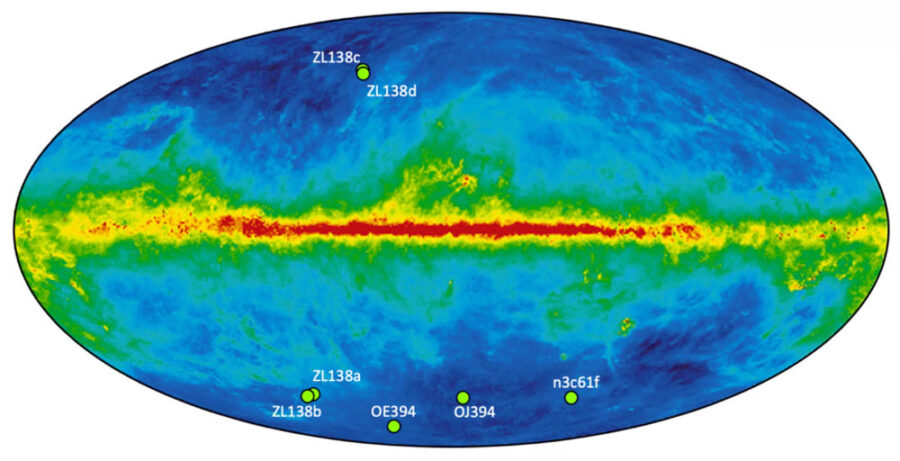
Lauer et al. / Astrophysical Journal 2021
They’re using New Horizons because the sky the spacecraft sees is 10 times darker than the one at Earth. Unlike the outer solar system, there’s a lot of dust near Earth and it scatters the Sun’s light in every direction, even backward. Ground-based observers see this dust-scattered sunlight as the zodiacal light, and it has muddled previous attempts to measure the cosmic optical background (COB).
Like the more famous cosmic microwave background astronomers measure the COB in two steps: image patches of sky, then subtract the light from all known sources. From New Horizons’ relatively dust-free vantage point, there’s one less component that astronomers have to subtract.
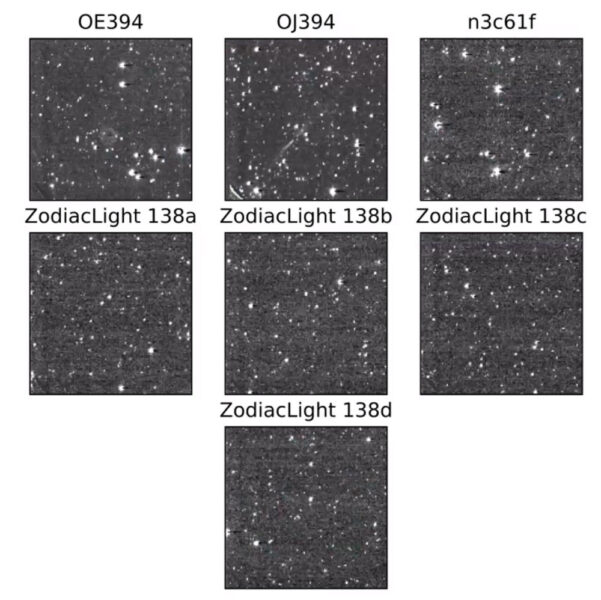
Lauer et al. / Astrophysical Journal 2021
There’s still lots of visible light sources to deal with, though: stars and galaxies themselves must be subtracted out of the image, as does light from stars and galaxies that are outside the field of view, but whose light scatters onto the camera. Then there’s the stars and galaxies that are too faint for the camera to resolve — those are removed with the aid of computer simulations.
Finally, they subtracted the contribution from all of the Milky Way’s stars, whose light scatters off interstellar dust, basing the calculations on observations of galactic cirrus.
But even after accounting for everything that astronomers know makes and scatters visible light, the New Horizons team was left with “extra” light that they still couldn’t explain. Lauer and colleagues called this component a “diffuse cosmic optical background” in the January 10th Astrophysical Journal.
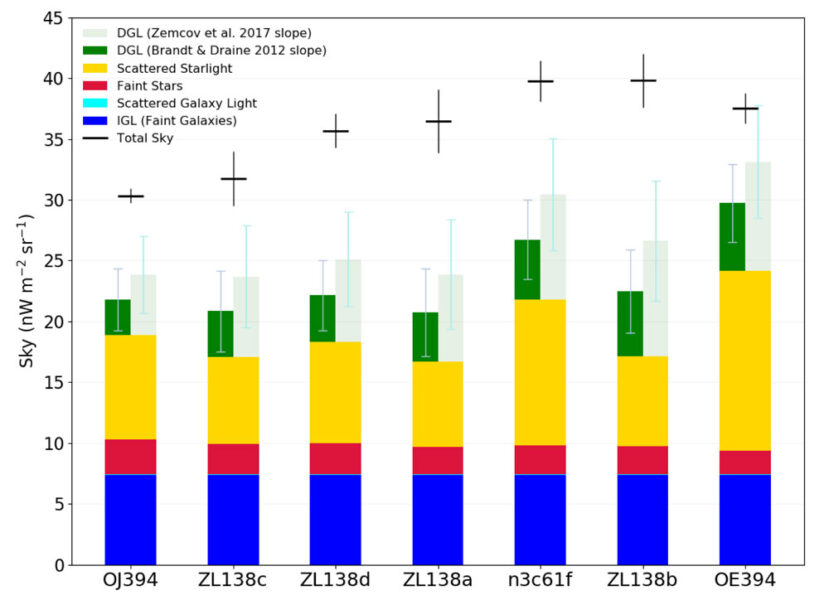
Lauer et al. / Astrophysical Journal 2021
“The total unknown amount is more than the integrated flux from all known galaxies,” Lauer said, presenting the results at the 237th meeting of the American Astronomical Society.
A Universe Half Empty, or Half Full?
If you’ve read other coverage about these results, you might be scratching your head at this point. NASA’s initial press release (since revised) led to headlines claiming that the universe has far fewer galaxies than thought. But that depends on whom you ask.
A little more than four years ago, Christopher Conselice (then at University of Nottingham, UK) calculated the total number of galaxies in the universe based on those found in the Hubble Ultra Deep Field (HUDF). Extrapolating to extremely faint magnitudes, he and his colleagues concluded that Hubble had missed 90% of the galaxies in the visible universe, which they estimated tally to at least 2 trillion. That would suggest that there are 10 times more galaxies than are accounted for in existing surveys.
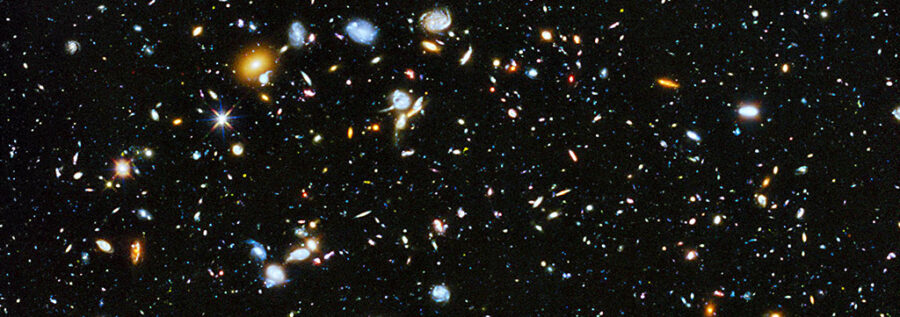
NASA / ESA / H. Teplitz / M. Rafelski (IPAC / Caltech) / A. Koekemoer (STScI) / R. Windhorst (Arizona State University) / Z. Levay (STScI)
Ultimately, the extra light the New Horizons team found could address the question of the total number of galaxies, since the cosmic optical background they measure is about twice what existing galaxy surveys predict. But the study does not settle the question one way or another. "Our work tells you how much money you have in the bank to spend — it doesn’t tell you how to spend it," Lauer explains. "Fill the universe with as many galaxies as you want, but when you’re done the total light that they make has to fit within our measurement."
What Makes “Extra” Light?
Whether all this “extra” light comes from unknown galaxies isn’t actually clear. All astronomers can say right now is that there’s a source of light that existing catalogs of stars and galaxies don’t capture.
Some of the excess may yet find a simple explanation as astronomers dig into the details. Shuji Matsuura (Kwansei Gakuin University, Japan), who also found an indication of “extra” light with his colleagues in the Cosmic Infrared Background Experiment (CIBER), suggested that the New Horizons team might have underestimated the contribution from scattered Milky Way light.
“My opinion,” he adds, “is that we have to be careful to claim the existence of the diffuse cosmic optical background at this stage.”
Even if the result pans out, there are plenty of other sources of unaccounted light besides faint galaxies. Perhaps astronomers have not properly included the light from galaxies’ faint stellar halos. Or maybe there are more “lost” stars than we thought, tugged away from their home galaxies during mergers and now floating in intergalactic space.
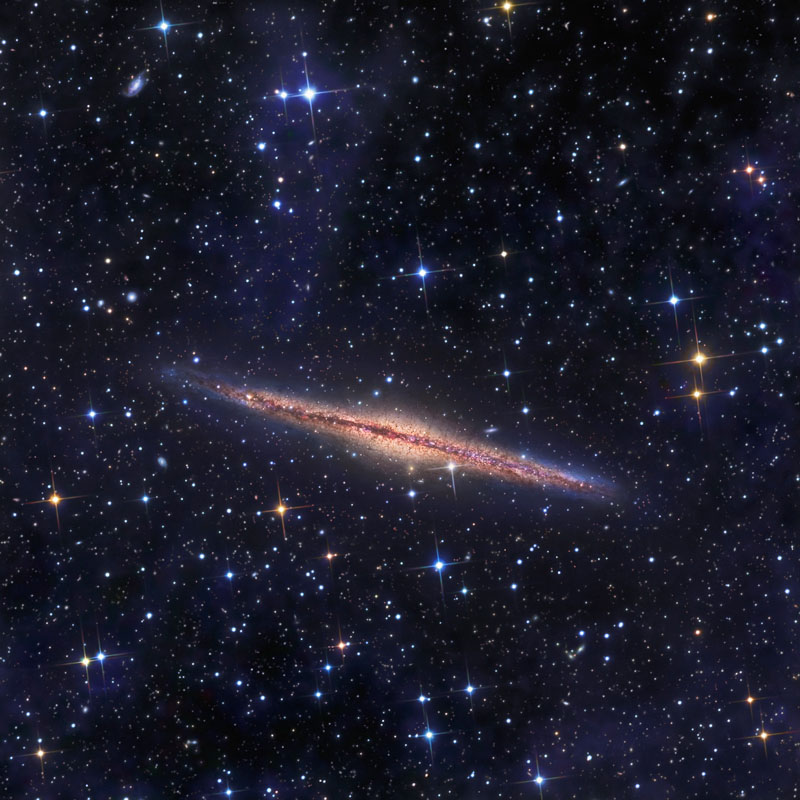
There’s also the possibility that there’s something unexpected out there, such as undiscovered black holes or even axions, a proposed (but still hypothetical) dark matter particle.
Future observations from space will shed more, ahem, light: Matsuura notes that the CIBER team plans to launch an additional sounding rocket to study the near-infrared background in more detail. And coauthor Marc Postman (STScI) stated at the AAS that while New Horizons has delivered the first successful (albeit “off-label”) outer solar system measurement of the COB, future planetary probes could make such a measurement part of their mission.
Editorial note (Feb. 3, 2021): This story has been updated to note that the New Horizons study does not estimate the total number of galaxies, but it does measure the background light that will help future studies in estimating that number.
 6
6









Comments
TestFlight
January 25, 2021 at 11:35 am
I really like these types of experiments that naturally piggyback back on major projects and produce valuable science data. The S&T article is a nice summary of the results and issues as well. Now, can we come up with an estimate of the number of galaxies in the unobservable universe?
You must be logged in to post a comment.
Peter Wilson
January 25, 2021 at 11:41 am
"Perhaps astronomers haven’t not properly included the light from galaxies’ faint stellar halos."
You mean, "Perhaps astronomers ain't properly..."?
You must be logged in to post a comment.
Andrew James
January 27, 2021 at 3:21 pm
You mean, ""Perhaps astronomers have not properly included the light from galaxies’ faint stellar halos."
You must be logged in to post a comment.
Monica YoungPost Author
February 1, 2021 at 10:02 am
Thanks, guys, typo is fixed 🙂
You must be logged in to post a comment.
Anthony Barreiro
January 27, 2021 at 5:04 pm
This story makes me think about Olber's paradox. When people assumed that the universe is infinite and static, the unavoidable conclusion was that at every point in the sky there must be a star, at some distance. So the night sky should be filled with starlight, with no darkness. Our current understanding that the universe is expanding gives us a solution -- the light from distant stars is red-shifted from the visible spectrum into invisible infrared and radio wavelengths, so we can't see them.
As we've gotten better at seeing farther and fainter things (e.g. the Hubble deep fields) we've bumped up against new versions of Olber's paradox. The discovery of the cosmic microwave background radiation revealed that the whole sky really is filled with light at microwave wavelengths. So Olber's paradox is not a paradox after all.
As we explore the cosmic optical background will we find new expressions of Olber's paradox?
You must be logged in to post a comment.
Anthony Barreiro
January 27, 2021 at 5:07 pm
(The expansion of the universe also means that the *observable* universe is not infinite.)
You must be logged in to post a comment.
You must be logged in to post a comment.